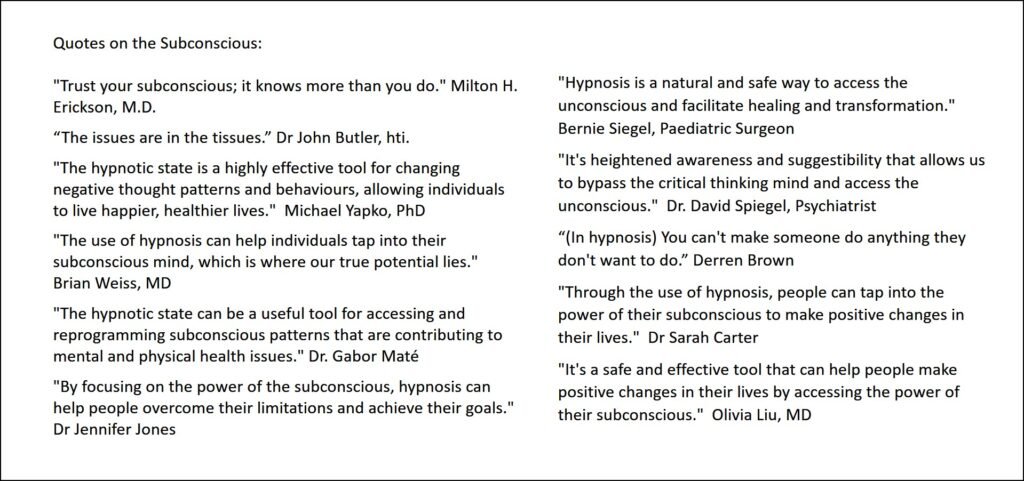Guided Visualisations are a great way to achieve a more profound sense and level of relaxation and inner peace.
At ksQigong, we do this indoors, with a person either lying on a yoga mat or sitting in a chair. The spoken (imagined) visualisation can sometimes take them outdoors safely and comfortably, to a place in nature usually.



Is Guided Visualisation Safe?
Yes. Guided visualisation is generally considered very safe and can be beneficial for relaxation, stress reduction, personal growth, and achieving specific goals. However, like any wellness or self-improvement practice, it’s essential to approach it mindfully and consider a few key points to ensure safety and effectiveness:
- Your Guide: Guided visualisation with a qualified therapist is safe; so you receive relevant and safe guidance.
- Comfortable Environment: Guided visualisation is best done in a quiet, comfortable, and safe environment where you won’t be disturbed. Creating a calming setting can enhance the effectiveness of the practice.
- Consent and Control: Remember that you remain in control during guided visualisation. You have the power to stop the practice at any time. Trust your instincts, and feel free to adjust or discontinue the visualisation if you ever feel uncomfortable.
- Avoidance of Trauma: Some visualisation exercises might inadvertently (but rarely) trigger distressing memories or emotions, but these should be manageable by a qualified mental health therapist, such as a licensed hypnotherapist.
- Light-headedness: Although very rare, one may feel a little light-headed afterwards. Make sure you are fully awake before you walk or drive away, drink some water and sit for a while if you need to; such effects usually subside quickly if they do occur.
- Specific health conditions such as epilepsy, psychosis, prone to fainting or dizziness, low blood pressure may create adverse effects under both qigong and the guided visualisation exercise. Kindly note that these are all exclusion criteria/conditions for this training. Also, see: Exclusions.
- Safety: If doing your own guided visualisation, from an online source, say, make sure it is not when operating machinery, such as driving, and only where you are totally safe to do so.
In summary, guided visualisation is a safe and effective practice when done properly. The inner mind uses imagination and creativity so these methods can be very beneficial. It’s a powerful tool for relaxation and self-improvement.





Is Guided Visualisation a form of Hypnosis?
Guided visualisation and hypnosis share some similarities but are distinct practices with different purposes and characteristics. Here are the critical differences between guided visualisation and hypnosis:
Guided Visualisation:
- Purpose: The primary purpose of guided visualisation is to promote relaxation, reduce stress, enhance focus, encourage personal growth, facilitate creativity.
- State of Consciousness: During guided visualisation, participants typically remain in a state of relaxed consciousness, with normal awareness.
- Sensory Imagery: Guided visualisation often involves creating vivid mental imagery that engages all the senses.
- Verbal Guidance: In guided visualisation, a trained instructor provides verbal guidance to help you create mental images and sensations. The guidance is typically descriptive and soothing.
- No Loss of Control: In guided visualisation, participants do not lose control over their actions or decisions. They remain entirely aware of their surroundings and can get up whenever they wish to.
Hypnosis and Hypnotherapy:
- Purpose: Hypnosis is often used for therapeutic or medical purposes (usually on a 1-2-1 basis but can be done in groups), such as treating certain psychological conditions like neurosis, managing pain and obsessive traits, or addressing behavioural issues like smoking cessation or weight loss.
- State of Consciousness: Hypnosis induces a heightened state of consciousness in which you become highly-focused (called Selective Thinking), deeply relaxed and more open to positive suggestions that are entirely acceptable to them (they choose), while staying fully aware of their surroundings.
- Sensory Imagery: Hypnosis can involve sensory experiences, but the focus is more on suggestion and response to the hypnotist’s professional guidance. It may or may not include the creation of vivid mental images.
- Verbal Suggestions: In hypnosis, a trained therapist provides verbal suggestions to guide clients into the trance state and offer therapeutic or behavioural instructions.
- Remain in Own Control: During hypnosis, participants may be more open to following the suggestions provided by the hypnotist. However, they will not say or do anything against their will, moral, religious, or ethical values, judgment, or best interests, as they are still in full (and even heightened) mental control of their experience. They can choose to exit the state any time they wish to and reject any suggestion from the hypnotherapist.
Under the guidance of a qualified and licensed hypnotherapist, guided visualisation can sometimes be taken to levels achieved by people when deep in hypnosis, where a more profound connection can often be made, which can promote deeper relaxation and better health through changes which can be more lasting.
Hypnotherapy was the first of all the (now) many mind therapies, it has strong roots in orthodox medicine – indeed, ten of the top twelve pioneers of modern-day hypnotherapy were distinguished medical doctors and psychiatrists. The British Medical Association (BMA), in their 1892 Report on Hypnotism, officially recognised hypnosis. The BMA further ratified hypnotherapy in 1955. In 1958, the American Medical Association (AMA) approved the medical use of hypnosis. It is seen as orthodox and reputable medical practice, when practised by properly-trained and qualified therapists of course – noting that the industry is not yet regulated; the CNHC is the closest thing to a regulatory body as it is linked to the UK’s Dept. of Health.
The General Hypnotherapy Register’s (GHR) definition is simple: ‘Hypnosis is a state of mind enhanced by (although not exclusively) mental and physical relaxation in which our subconscious is able to communicate with our conscious mind.’ Hypnosis is a completely natural state of mind, with an extraordinary quality of mental, physical and emotional relaxation.
The Power of the Subconscious Mind.
The human mind is an amazing organ. It is able to conduct so many actions and processes that keep us alive and healthy. Sigmund Freud popularised the role the subconscious mind plays in our lives.
When conceptualising the subconscious mind, it can be helpful to compare the mind to an iceberg; everything above the water represents conscious awareness, while everything below the water represents the subconscious mind.
Your subconscious mind takes care of many things for you, so you don’t have to think about them consciously. This includes all bodily functions from your heart rate to the release of hormones and enzymes – all carefully orchestrated by the mind, but of course, we never have to think consciously about it. The subconscious also controls our metabolism, stress response, digestion (with the intestinal ‘Enteric’ System and Vagus nerve) and immune system function; see the Iceberg Model diagram for more. It is clear that our moods affect our bodies, and our bodies affect our moods, either positively or negatively.
Our present experiences are influenced by past memories contained within our subconscious mind. When we change the emotional memory of these events, we also change our current attitudes, beliefs and motivations towards our present reality.
We can manifest a creative and prosperous present and future by reappraising the past stored in our subconscious. Everything you have ever learnt is stored in your subconscious.
In the relaxed state of hypnosis, the client is neither unconscious nor asleep. The state (‘Theta’) is one of awareness in which there is a heightened receptiveness to ideas, understanding and the great ability to create change. The client gives up their focus on external stimuli and begins to focus on their internal world. It’s important to understand that:
• The subconscious thinks literally
• It sees and explores what the conscious mind ignores
• It knows things the conscious mind has forgotten
• It uses imagination rather than reality (and contains a vast range of possibilities)
• It helps maintain health or induce self-healing and balance maintenance.
You may have noticed that all the conscious resolutions in the world don’t seem to change that habitual behaviour (failed diets, habits) – or not permanently – no matter how much ‘willpower’ (conscious effort) you manage to muster! This is why we have the expression ‘old habits die hard’, and many people are open to suggesting that the problem is a lack of willpower. The conscious mind can (and often does) sabotage our efforts to improve our situation; it likes to form immediately pleasurable habits without questioning long-term benefits or risks.
” … It also leads to the common perception that some habits – like smoking, for example – are challenging problems to crack. The irony of that is that the subconscious can change it at the drop of a hat; it’s just that most people don’t know that, so instead of using hypnotherapy to provide the subconscious with an explanation, they go on and on using methods that only rarely work, with little success.” (Hypnotic World).
Theta Waves

When you’re awake, your conscious mind is in charge. Beta waves are in control. As you start getting more relaxed, alpha waves become more prevalent. You’re still awake but genuinely chilled out. Then, when your subconscious mind takes over, theta waves pick up the slack.
Theta waves are in the 4 to 8 Hz range and is the state where visualisation and hypnosis can best be used to help someone improve their mental and physical health. When theta waves are dominant, your conscious mind is more or less switched off, so it less able to “sabotage” the effort for change. That means you can tap into the vast potential of your subconscious for your benefit.


Sources & Readings: Notes from HW = HypnoticWorld text; Freud’s Unconscious Mind – The New Dealer. https://www.thenewdealer.org/reviews/2019/02/06/freuds-unconscious-mind. https://mindtraining.net/motivational-quotes/hypnosis.php; https://www.brainyquote.com/topics/hypnosis-quotes https://my.clevelandclinic.org/health/body/22279-vagus-nerve https://www.ncbi.nlm.nih.gov/books/NBK279994/ https://www.counselling-directory.org.uk/memberarticles/the-vagus-nerve-our-biological-antidote-to-anxiety-and-stress
______________________




